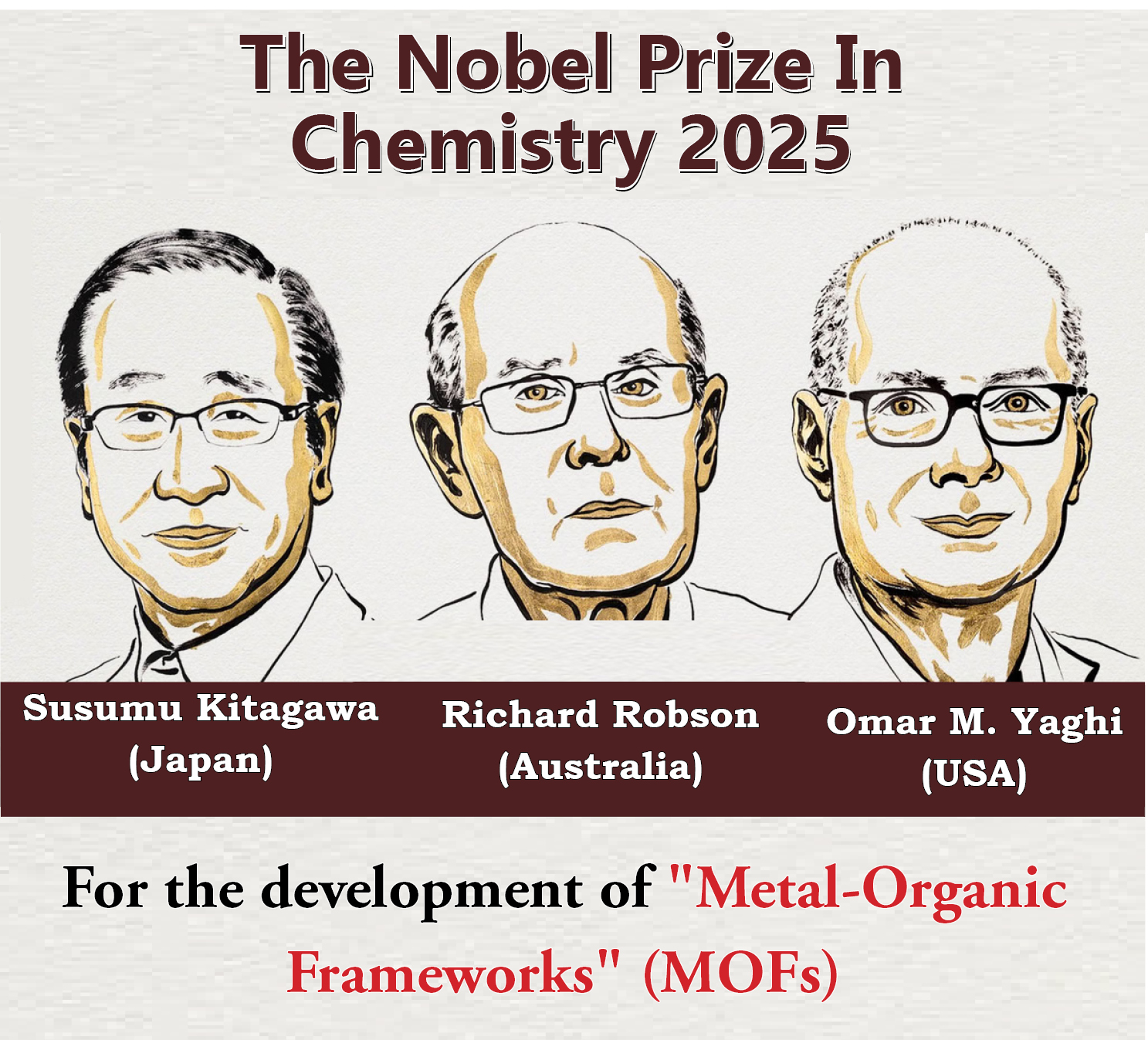Context:
Recently, the Royal Swedish Academy of Sciences awarded the 2025 Nobel Prize in Chemistry to Susumu Kitagawa (Japan), Richard Robson (Australia) and Omar M. Yaghi (USA) “for the development of metal‑organic frameworks” (MOFs).
About Metal-Organic Frameworks (MOFs):
Metal-Organic Frameworks (MOFs) are a class of crystalline porous materials made of metal ions or clusters connected by organic ligands. They are known for their exceptionally high internal surface area, low density, and tunable pore sizes, which enable a wide range of applications.
Key characteristics:
· High porosity and surface area: MOFs are highly porous, with pore volumes capable of occupying over 90% of the crystal's volume. Some MOFs, like MOF-5, can have a surface area exceeding 3,000 square meters per gram.
· Tunable structure: The size and shape of a MOF's pores can be precisely controlled by choosing different organic linkers of varying lengths and geometries.
Contribution of laureates:
Richard Robson’s early experiments (late 1980s) with copper ions and multi‑armed organic ligands laid the conceptual foundation: linking nodes and linkers to build porous crystalline nets.
However, early structures were unstable and lacked robustness. It was through subsequent work by Kitagawa and Yaghi that more stable, functional MOFs were designed and synthesised.
Key Applications & Global Significance:
The recognition of MOFs by the Nobel Prize underscores their multifaceted potential. Below are some of the key application domains and implications:
1. Carbon dioxide capture and climate mitigation
MOFs can selectively adsorb CO₂ from gas mixtures (e.g. flue gases), thus helping reduce greenhouse gas emissions and mitigate climate change.
2. Water harvesting & purification
Some MOFs have been designed to harvest moisture from arid air — extracting water vapor even at low humidity. This opens possibilities for decentralized water supply in arid regionsFurther, MOFs can help purify water by capturing toxins or contaminants.
3. Gas storage and separation
MOFs are excellent candidates for storing gases such as hydrogen or methane at mild pressures, owing to their high surface area and tunability. They can also separate gas mixtures (e.g. removing impurities, sieving).
4. Catalysis & chemical transformations
The porous frameworks can host catalytic active sites (either on metal nodes or within ligands), enabling reactions such as oxidation, reduction, or conversion of small molecules under milder conditions.
5. Energy & clean technologies
In the energy domain, MOFs are being explored for battery electrodes, supercapacitors, gas separation in fuel cells, and more.
6. Environmental & resource recovery
MOFs may assist in capturing pollutants, removing toxins or heavy metals, and enabling resource recovery from waste streams.
Conclusion:
The 2025 Nobel Prize in Chemistry, awarded to Kitagawa, Robson, and Yaghi for their pioneering work on metal‑organic frameworks, holds special significance in our era. It exemplifies how creative molecular architecture, when aimed toward sustainable ends, can open entirely new frontiers of chemistry and technology.







